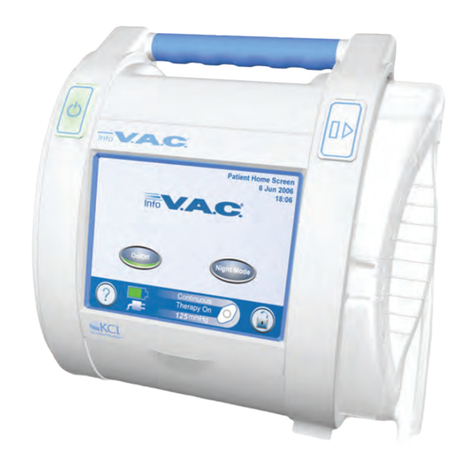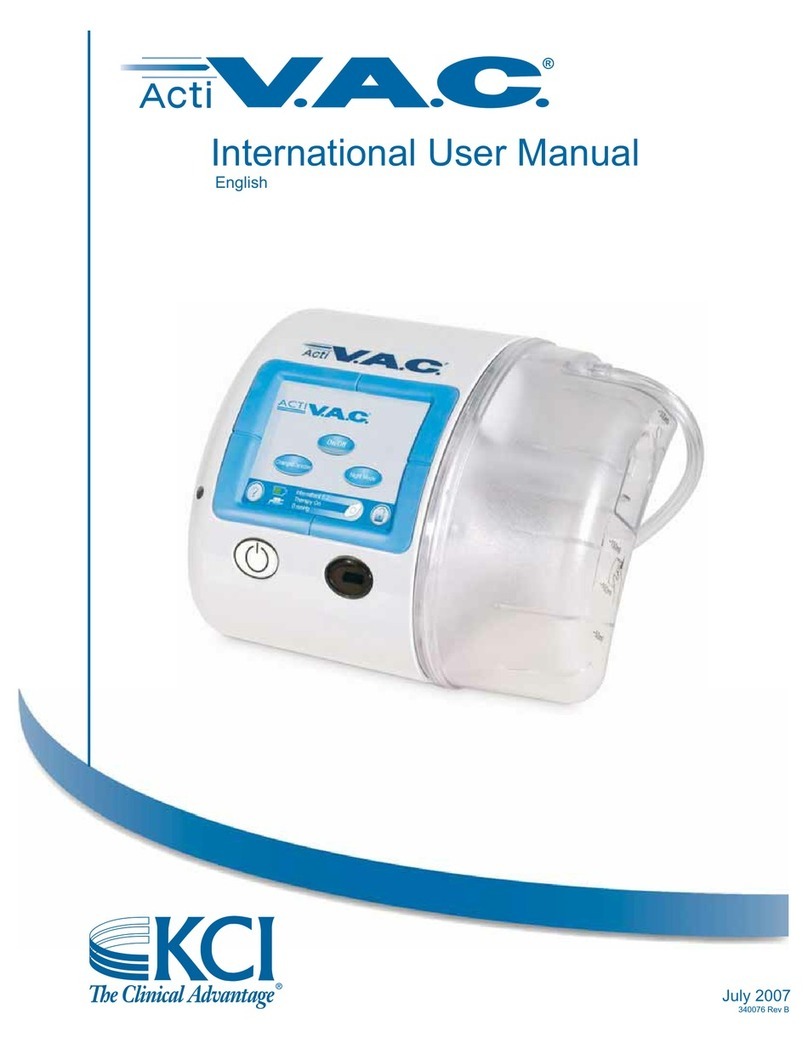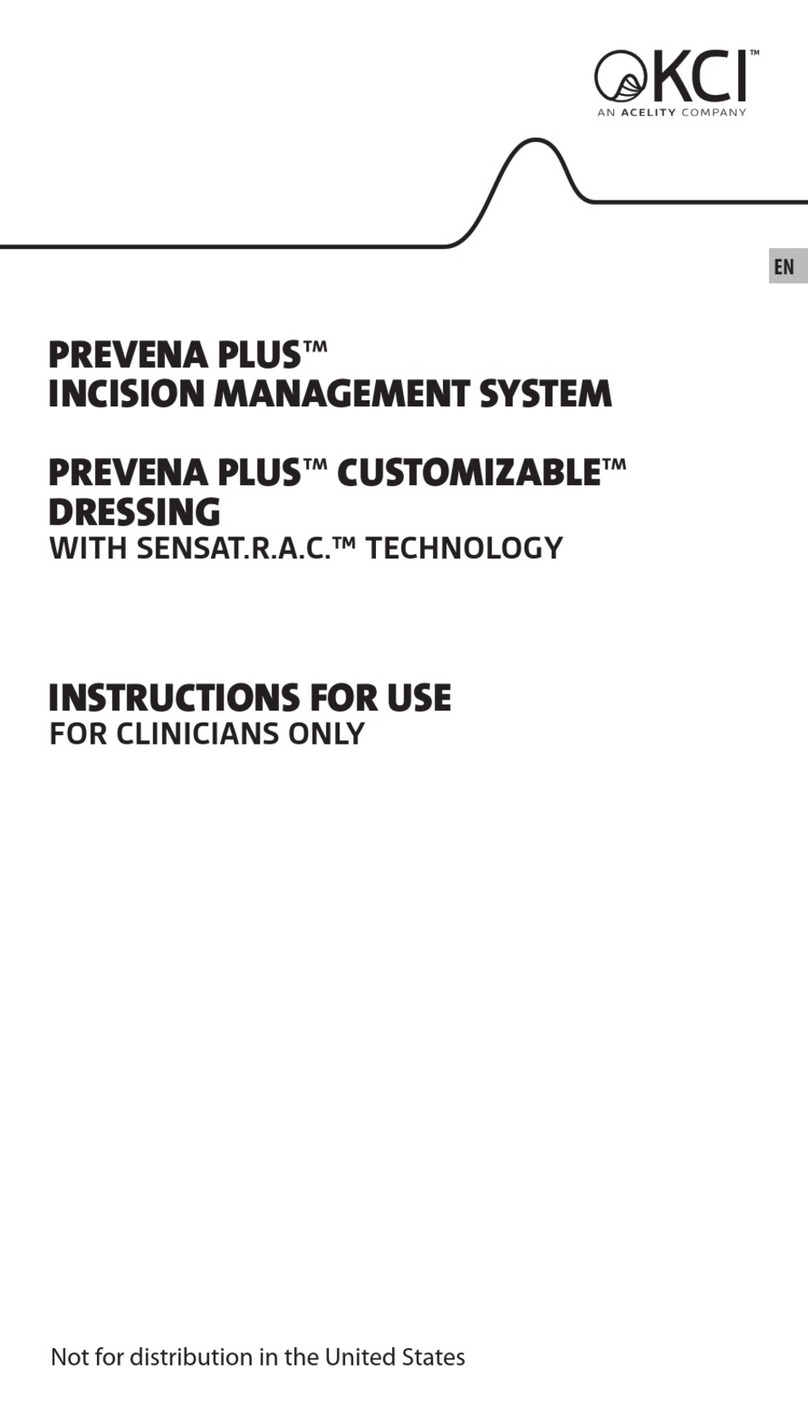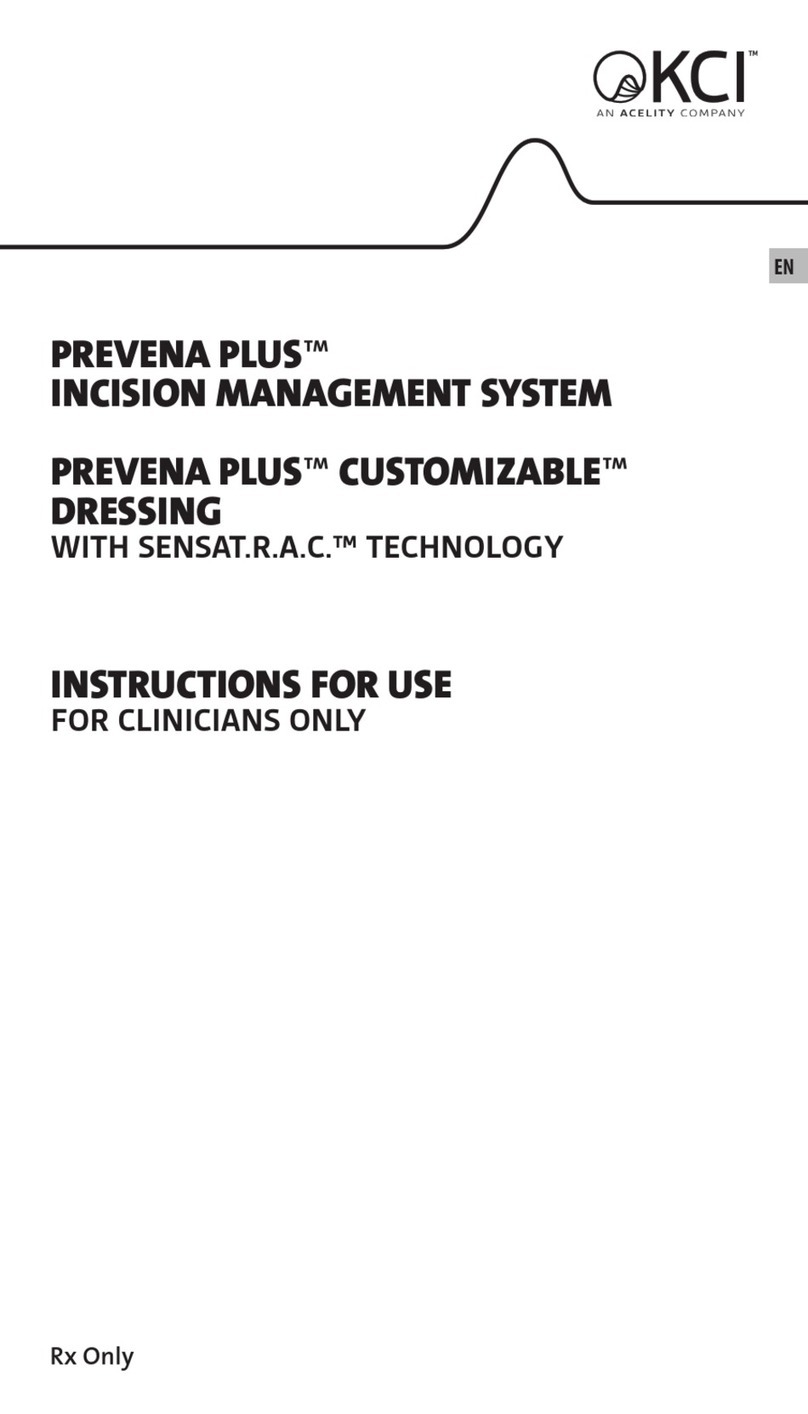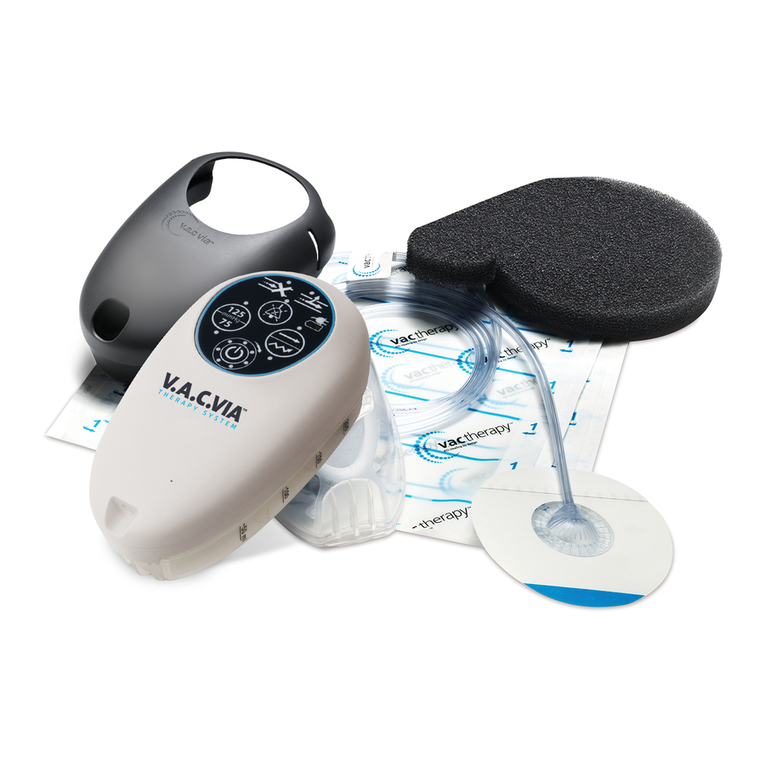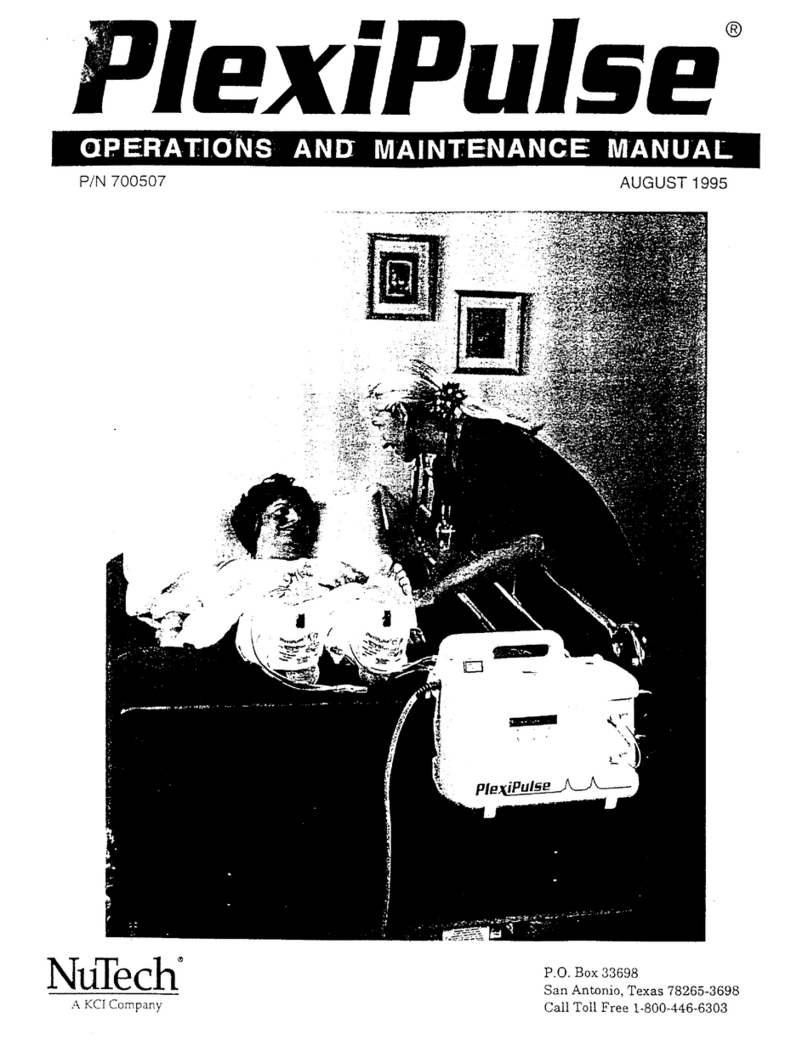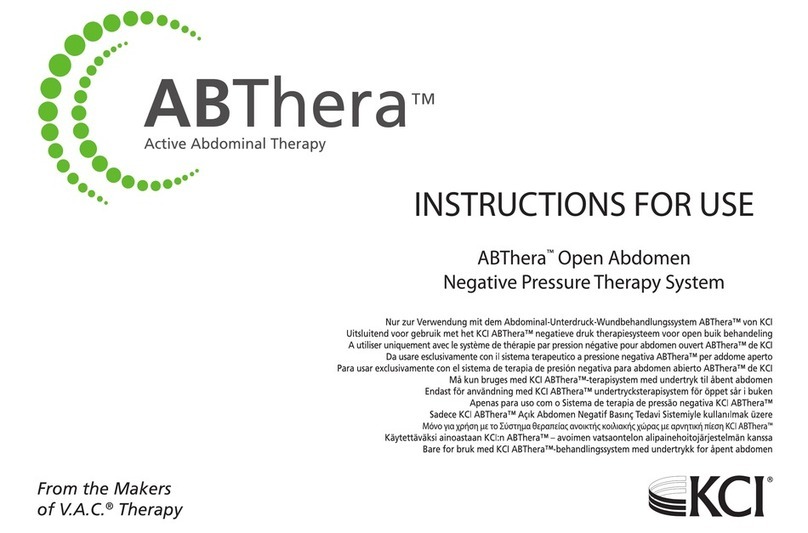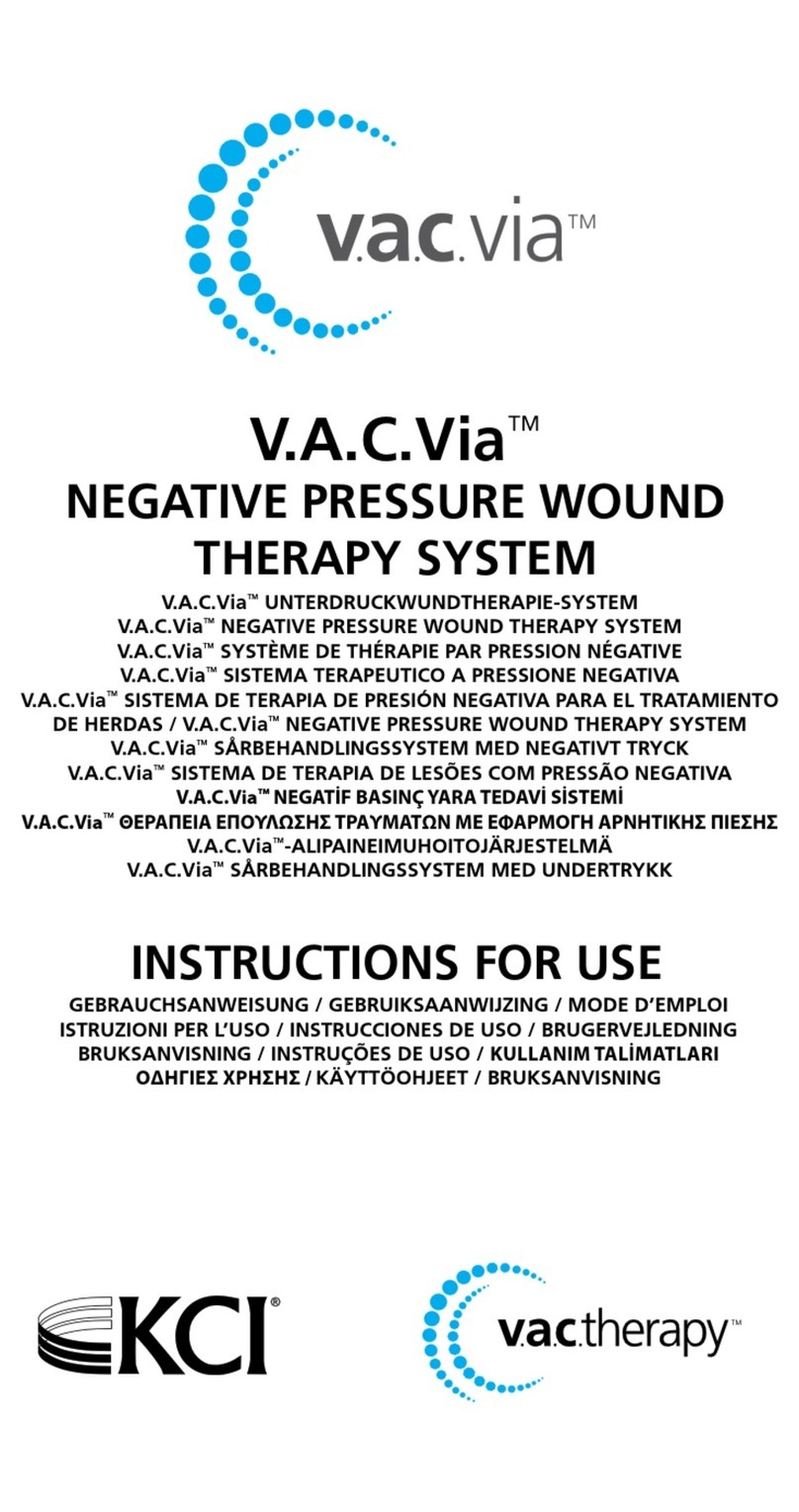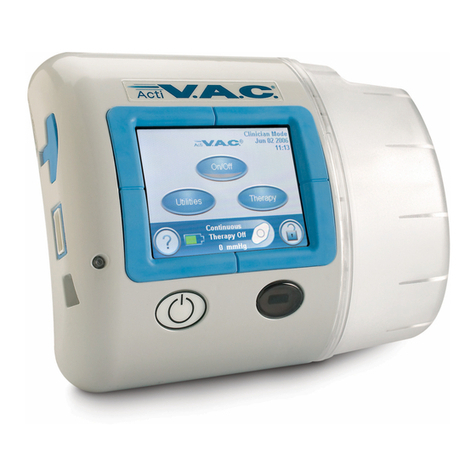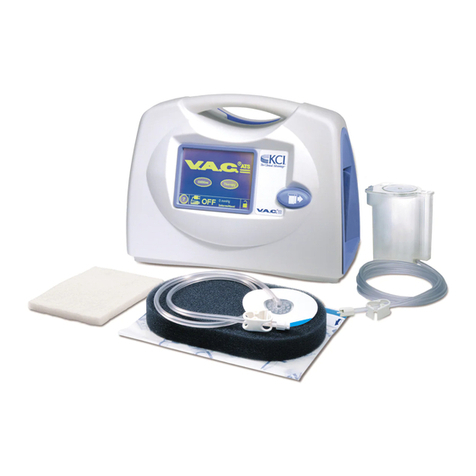
Introduction 1-2 First Step®Plus™ Operations Manual
MAXIMUM PATIENT WEIGHTS
•Maximum Patient Weight: 250 lbs. (114 kg.).
SAFETY TIPS
Bed Frame – Always use a standard healthcare bed frame with Side Rails and any other safeguards or protocols
that may be appropriate. Frame and Side Rails must be properly sized to eliminate any gaps that might entrap a
patient’s head or body.
Brakes – Caster brakes should always be locked once the bed is in position. Verify wheels are locked before any
patient transfer to or from the bed.
Bed Height – To minimize the risk of falls or injury the bed should always be in the lowest possible position when
the patient is unattended.
Side Rails/Patient Restraints – Whether and how to use Side Rails is a decision that should be based on each
patient’s needs and should be made by the patient and the patient’s family, physician and caregivers, with facility
protocols in mind. Consider not only the clinical and other needs of the patient but also the risks of death or
serious injury from falling out of bed and from patient entrapment in or around the Side Rails, restraints or other
accessories. For a description of entrapment hazards, refer to FDA Safety Alert dated August 23, 1995, the
JCAHO Sentinel Event Alert #27, dated September 6, 2002, and other information referenced at http://
www.kci1.com/products/FDASafetyAlert. Consult a caregiver and carefully consider the use of bolsters,
positioning aids, floor pads or KCI®Padded Side Rail Accessories, especially with confused, restless or agitated
patients. It is recommended that Side Rails (if used) be locked in the full upright position when the patient is
unattended. Make sure a capable patient knows how to get out of bed safely (and, if necessary how to release the
Side Rails) in case of fire or other emergency. Monitor patients frequently to guard against patient
entrapment.
Skin Care - Monitor skin conditions regularly, especially at bony prominences and areas where moisture or
incontinence may occur or collect, and consider adjunct or alternative therapies for high acuity patients. Early
intervention may be essential to preventing serious skin breakdown.
Fluids – Avoid spilling fluids on Air Supply Unit. If spills do occur clean fluids from bed and Air Supply Unit
wearing rubber gloves to avoid any possibility of shock. Once fluid is removed, check operation of components in
area of spill.
NOTE: Fluids remaining on the controls can cause corrosion, which may cause components to fail or operate
erratically, possibly producing potential hazards to patient and caregivers.
Lock-Outs – The Lock-Out feature on the Air Supply Unit should be used at the caregivers discretion to ensure
against unintentional or unauthorized tampering with unit settings.
Avoid Fire Hazards – To minimize risk of fire, connect the bed’s power cord directly into a wall-mounted outlet.
Do not use extension cords or multiple outlet strips. Review and follow FDA’s Safety Tips for Preventing Hospital
Bed Fires (dated 12/18/03) and other information referenced at http://www.kci1.com/products/FDASafetyAlert.
No Smoking in Bed – Smoking in bed can be dangerous. To avoid the risk of fire, smoking in bed should never
be allowed.
Tobacco Smoke – If routine laundering and cleaning procedures as described in the Preventive Maintenance
section of the Maintenance chapter of the First Step®Select™ Maintenance Manual are not followed, tobacco
smoke build-up may conceivably reduce the amount of air flow through the product. Severe air restrictions
(whatever the source) may cause the Air Supply Unit to overheat and automatically deactivate.
Power Cord – Ensure power cord is kept free from all pinch points and moving parts and is not trapped under
casters. Improper handling of the power cord can cause damage to the cord, which may possibly produce risk of
fire or electrical shock.
General Protocols –Follow all applicable safety rules and institution protocols concerning patient and caregiver
safety.
Rev. B 05/05
